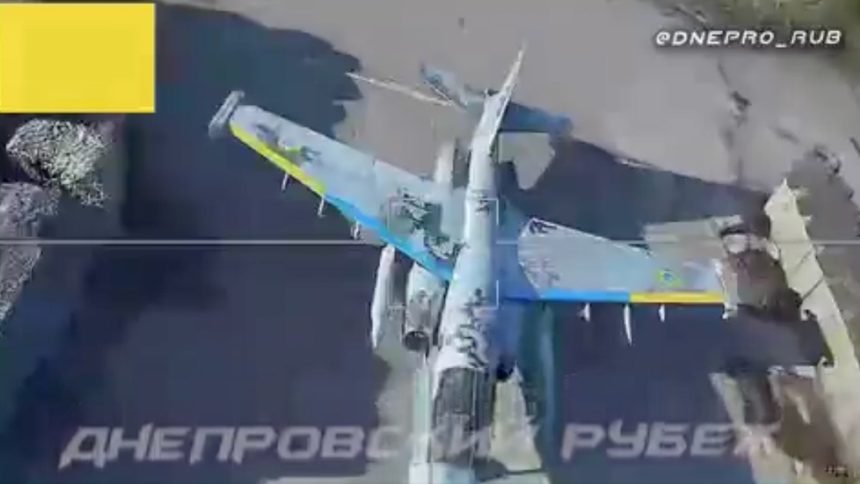Here comes the documented use of an aircraft decoy by the Ukrainian military.
On Nov. 30, 2023, an interesting video started circulating online on Russian Telegram channels. The footage shows a Lancet attack drone destroying what appears to be a Ukrainian Air Force Su-25 Frogfoot aircraft at Dolgintsevo air base near Kryvyi Rih, Ukraine. This is not a real surprise: a Russian Lancet struck a MiG-29 Fulcrum at the base in September; on Oct. 10, another Lancet destroyed an Su-25 also parked at the airbase located about 70 km (45 miles) from the front line.
In fact, after operating almost unscathed for the first part of the war, Dolgintsevo has found itself vulnerable to the drone attacks launched with a new variant of the Lancet with a 45-mile range (as opposed to the older model, that had only a 25-mile range) lately.
Earlier today, Russian channels released a video reportedly showing a Lancet attack drone striking a Ukrainian Su-25 at Kryvyi Rih Air Base.
Only one caveat; the Ukrainian Su-25 was a decoy. pic.twitter.com/XXxi5THZJD
— OSINTtechnical (@Osinttechnical) November 30, 2023
However, if you look closely at the frames of the latest air strike clip, you will notice that the Su-25’s wings are connected to the fuselage instead of blending with the air intakes, the cockpit seems to be fake, the landing gear too thin to be real: in other words, it looks like the Lancet blew up a very well manufactured decoy.
Decoy Su-25 vs Ukrainian Su-25
It is a remarkably accurate decoy, possibly using donor parts from a retired Su-25, but the nacelles give it away. pic.twitter.com/III4CQj8rI
— OSINTtechnical (@Osinttechnical) November 30, 2023
Various kinds of decoys, along with experimental anti-drone systems, have been reported to be in use at both Russian and Ukrainian airfields. The use of decoys shows that both sides recognise how vulnerable their airbases have become to small, hard to detect, kamikaze drones.
Indeed, even though the latest documented strike on a decoy did not cause a real loss to the Ukrainian Air Force, it highlights the threat posed by the Lancets as well as the surveillance drones that monitor their strikes: current air defenses around Ukraine’s forward bases are simply unable to detect and counter them. At least, not always.
Very interesting video of a Ukrainian MiG-29 fighter jet based at the Dolgintsevo Air Base near Kryvyi Rih being struck by a Russian ZALA Lancet loitering munition.
The airframe appeared to be operational, though it can be concluded from the video that it suffered only minor… pic.twitter.com/jZDYZ5rukq
— Status-6 (Military & Conflict News) (@Archer83Able) September 19, 2023









